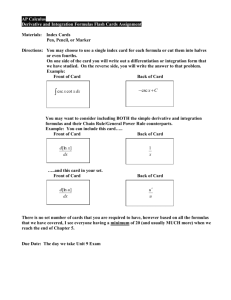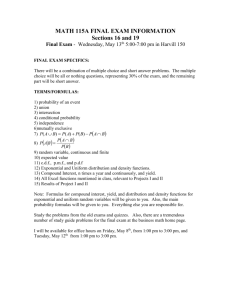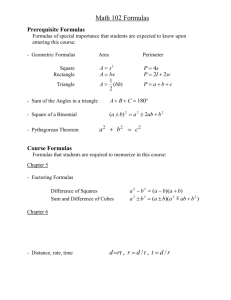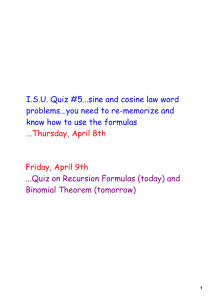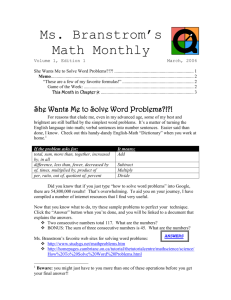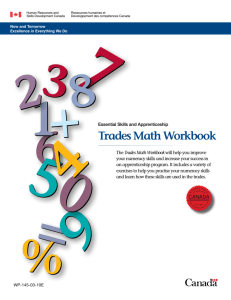3431-test-2-study-no..
advertisement
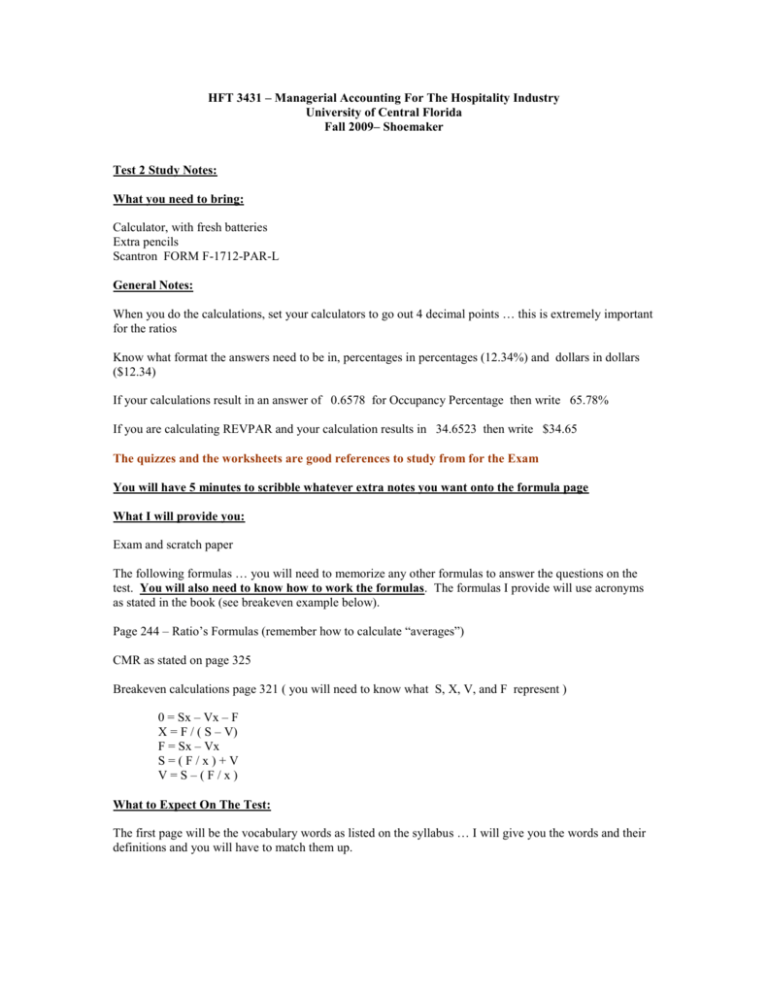
HFT 3431 – Managerial Accounting For The Hospitality Industry University of Central Florida Fall 2009– Shoemaker Test 2 Study Notes: What you need to bring: Calculator, with fresh batteries Extra pencils Scantron FORM F-1712-PAR-L General Notes: When you do the calculations, set your calculators to go out 4 decimal points … this is extremely important for the ratios Know what format the answers need to be in, percentages in percentages (12.34%) and dollars in dollars ($12.34) If your calculations result in an answer of 0.6578 for Occupancy Percentage then write 65.78% If you are calculating REVPAR and your calculation results in 34.6523 then write $34.65 The quizzes and the worksheets are good references to study from for the Exam You will have 5 minutes to scribble whatever extra notes you want onto the formula page What I will provide you: Exam and scratch paper The following formulas … you will need to memorize any other formulas to answer the questions on the test. You will also need to know how to work the formulas. The formulas I provide will use acronyms as stated in the book (see breakeven example below). Page 244 – Ratio’s Formulas (remember how to calculate “averages”) CMR as stated on page 325 Breakeven calculations page 321 ( you will need to know what S, X, V, and F represent ) 0 = Sx – Vx – F X = F / ( S – V) F = Sx – Vx S=(F/x)+V V=S–(F/x) What to Expect On The Test: The first page will be the vocabulary words as listed on the syllabus … I will give you the words and their definitions and you will have to match them up. Chapter 5: Study the 5 ratio types and know what they represent Know what ratios belong to which type (ie: Current Ratio is a Liquidity Ratio) I will give you a hand out with the required ratios formulas (see page 244) and ask you to do calculate a few ratios with multiple guess answers Remember to read the formulas correctly … especially the ones that want “average” assets or liabilities. The “average” is ( ( beginning + ending ) *.5 ) Chapter 6: Know the various costs (fixed, mixed, variable, step, etc) and examples of each Know that Total Mixed Cost = Fixed Costs + ( variable cost per unit * units sold) … page 270 - 271 Know that there are 3 ways to estimate the fixed and variable cost portions of a mixed cost expense High/low Scattergram Regression Analysis Pages 272 - 278 Be able to do a High/Low method problem (see worksheet) See pages 278 - 279 and be able to calculate the indifference point when given a fixed cost lease and a variable cost lease See page 286 and be able to do a Buy or Lease problem like worksheet Chapter 7: Study the formulas on page 321 for the various break-even scenarios … will have a series of questions like on the worksheet See page 320 and be able to identify the following elements Variable Cost line Total Revenue Line Fixed Cost Line Total Cost Line Break-Event Point Operating at a profit See page 325 and be able to calculate Contribution Margin and Contribution Margin Ratio See page 327 and be able to calculate the additional sales required to cover an increase in fixed cost Good Luck!!!

